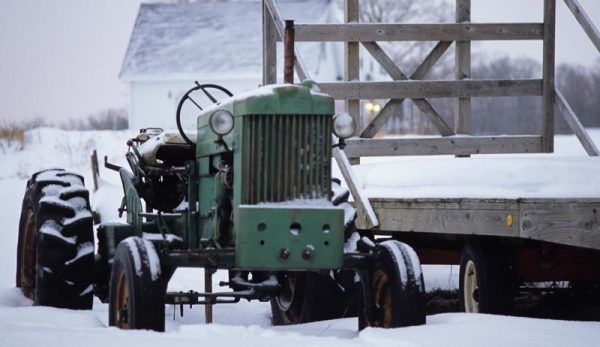
Fall is my favorite farming season. As temperatures cool down, the hectic pace of spring and summer tends to slow a little. This leaves time to catch up on projects sitting on the backburner.
But at the same time, it’s important to stay attuned to the approach of winter. On my northern Wisconsin farm, winter is a big deal, lasting for as many as five or six months. Thus, I spend much of fall preparing for winter, making sure everything is in order before the longest, coldest season settles in.
If you’re new to the experience of winter on a farm, here are four tasks I recommend pursuing during the fall in order to get ahead of schedule and set yourself up for success.
Read more: It’s important to ready things around the farm for winter before cold weather arrives.
Add fresh compost to your garden beds.
Wait—why would you add fresh compost to your gardens beds if they’ll soon get buried under snow and ignored until spring? Well, spring tends to be a very busy time of year, and adding compost to garden beds takes time.
So why not shift the chore to fall instead?
Once your beans/pumpkins/etc. have run their course, clear the beds of vegetation and refresh them with compost right away. That way, when spring rolls around, the beds will be ready to go and nothing will delay you from planting as soon as the frost danger is past.
Clean up brush piles and similar messes.
Sometimes, we start projects, but don’t quite finish them. We cut up the fallen red pine tree, but don’t get around to cleaning up all the branches. Or we gather stones to edge a walkway, but get distracted by a more pressing project and wind up leaving the stones in a pile by the farmhouse.
Don’t feel bad—hobby farmers have a lot to juggle. But I recommend cleaning up any farm messes like these before winter arrives. This way, they won’t be a distraction in the spring, when there’s so much to do.
And if you clean up random assortments of rocks/debris/etc. before winter, you won’t have to worry about hitting them with a plow or snow blower. Been there, done that!
Read more: It’s important to clean up storm debris right away. These tools will help.
Prepare (or put away) seasonal machinery.
Many pieces of farm equipment are seasonal in nature, and it’s a good practice to put them away when not in use. Whether that means parking the hay baler in a garage bay or storing garden tools in the toolshed, make an effort to stash your farm equipment away so it won’t sit out in the elements all winter.
At the same time, think about preparing machines that will see use during the winter. Pull out your snow blower to change the oil and perform other routine maintenance tasks. Install weights and tire chains on your lawn mower, ATV and/or tractor for improved winter tractions.
Make a list of everything you need to prepare. Aim to check off all the items before the first snowstorm hits.
Ready your winter clothes and gear.
The extent and severity of winter weather varies considerably across the U.S., but pretty much anywhere you live, colder temperatures can be expected. Whether your definition of cold is 25 or -25 degrees F is less important than acknowledging you may need special winter gear to handle the conditions.
Warm clothes, gloves and boots should be brought out of storage (or purchased anew, if your old gear is worn out) before it’s needed. That way, you won’t be caught unprepared when a sudden cold front brings the chill of winter to your farm.
Nobody needs frostbite, right?
Preparing for winter should be a primary focus for any farmer during the autumn months. And once you’re ready, you can relax in the confidence that comes with feeling ready for anything.




